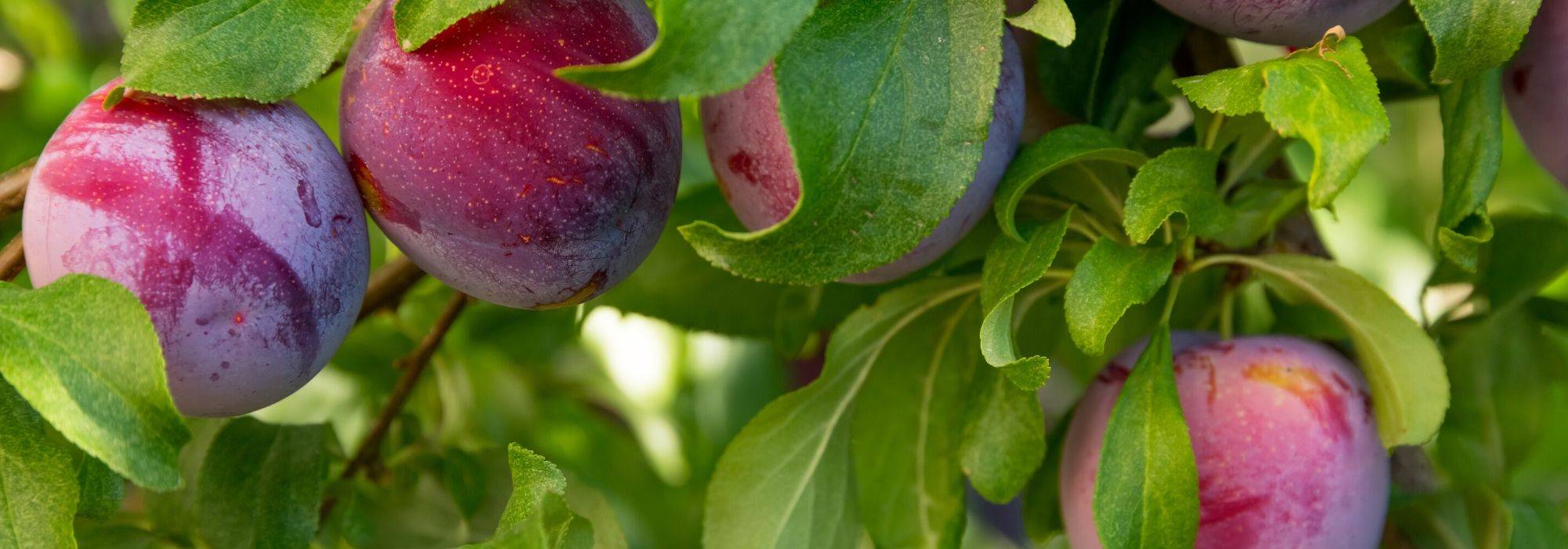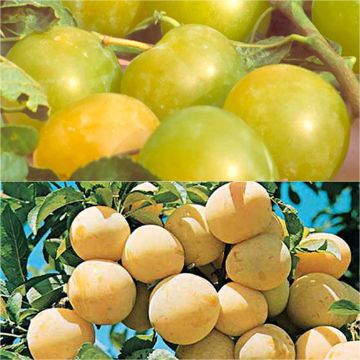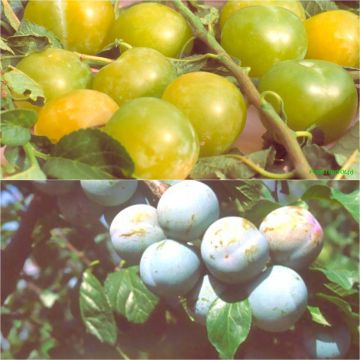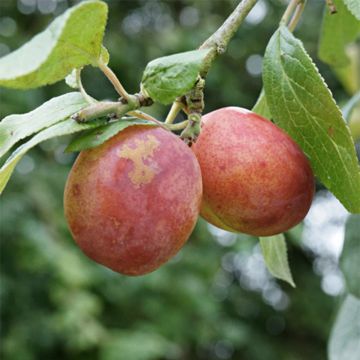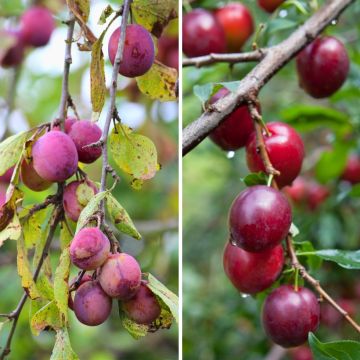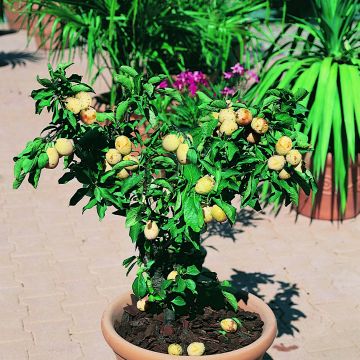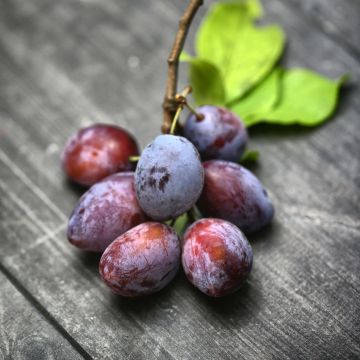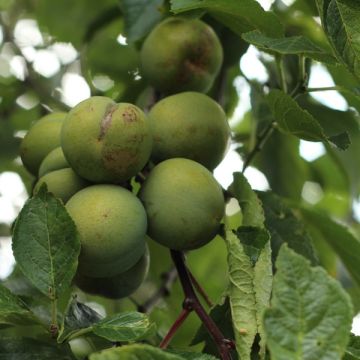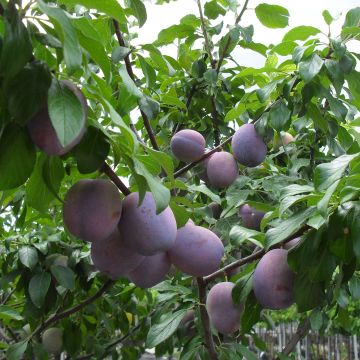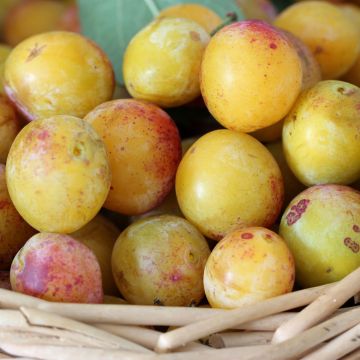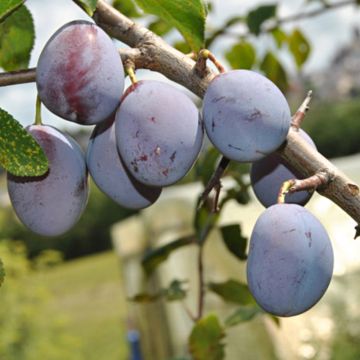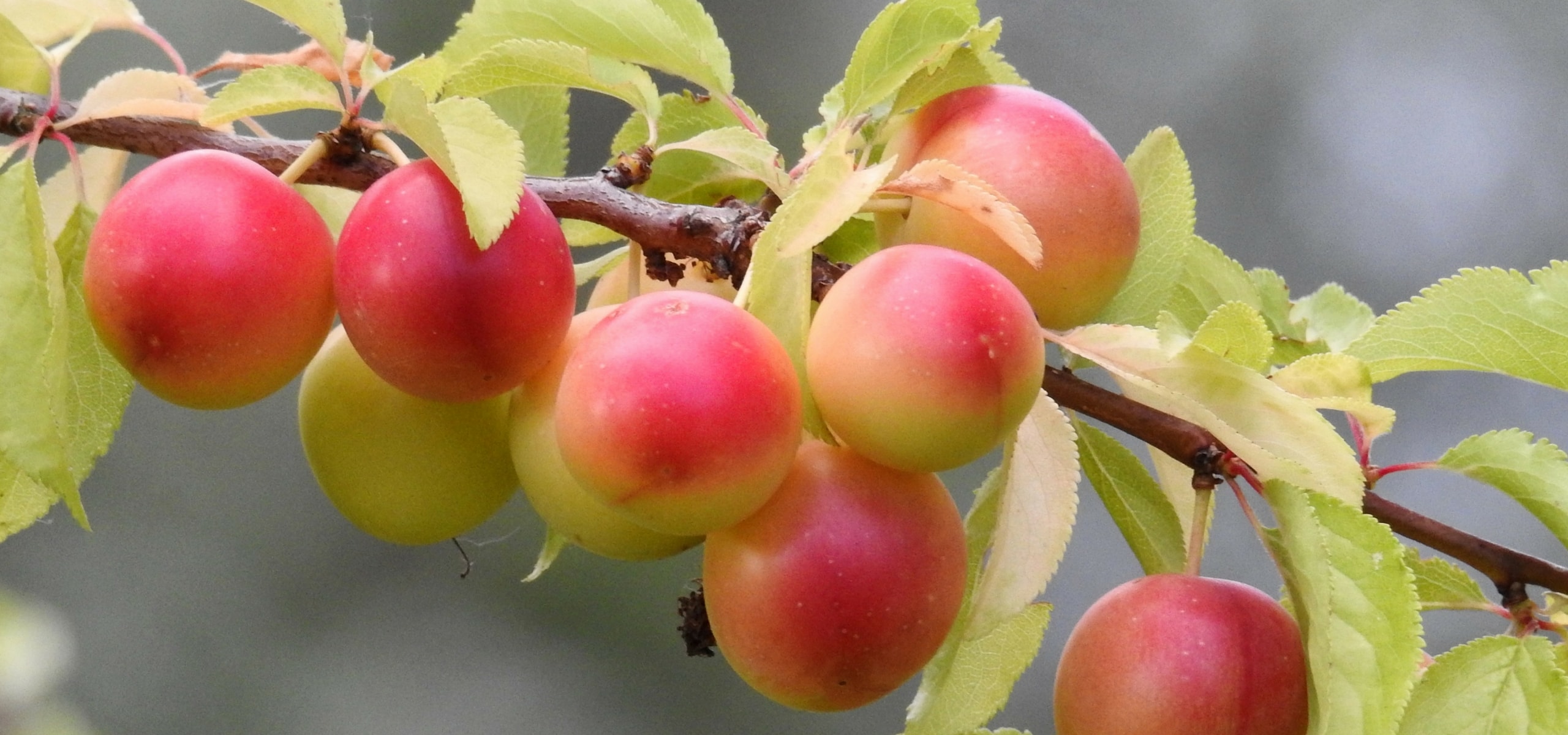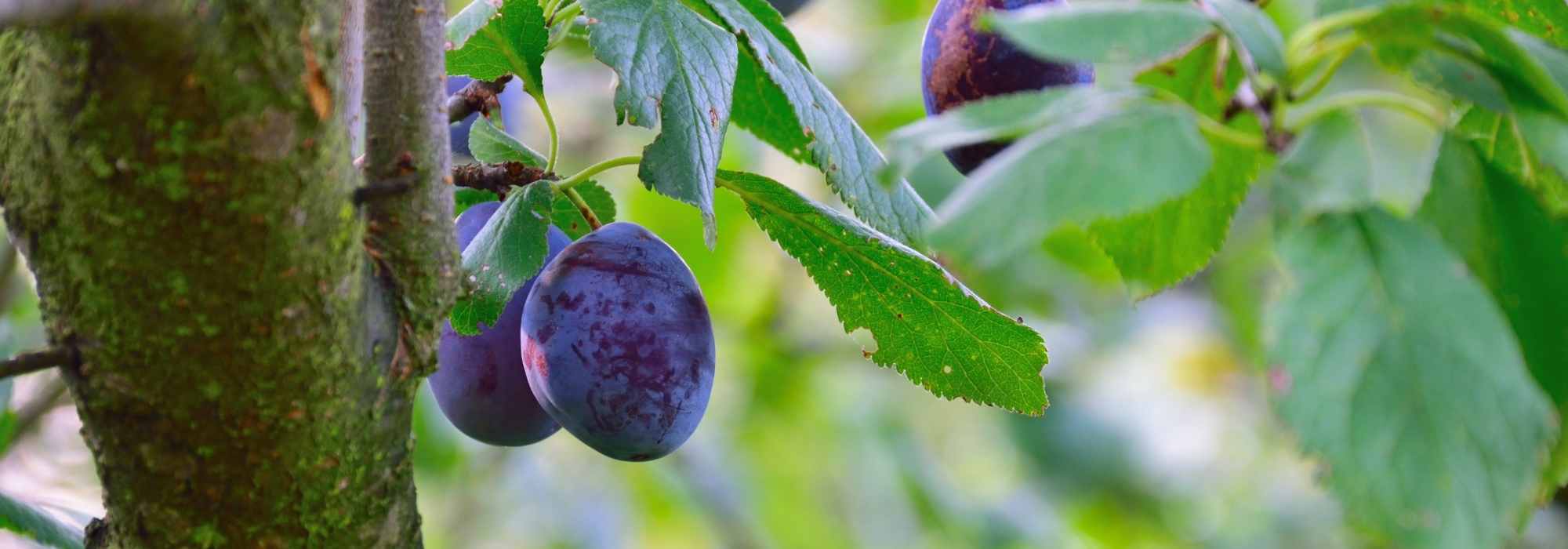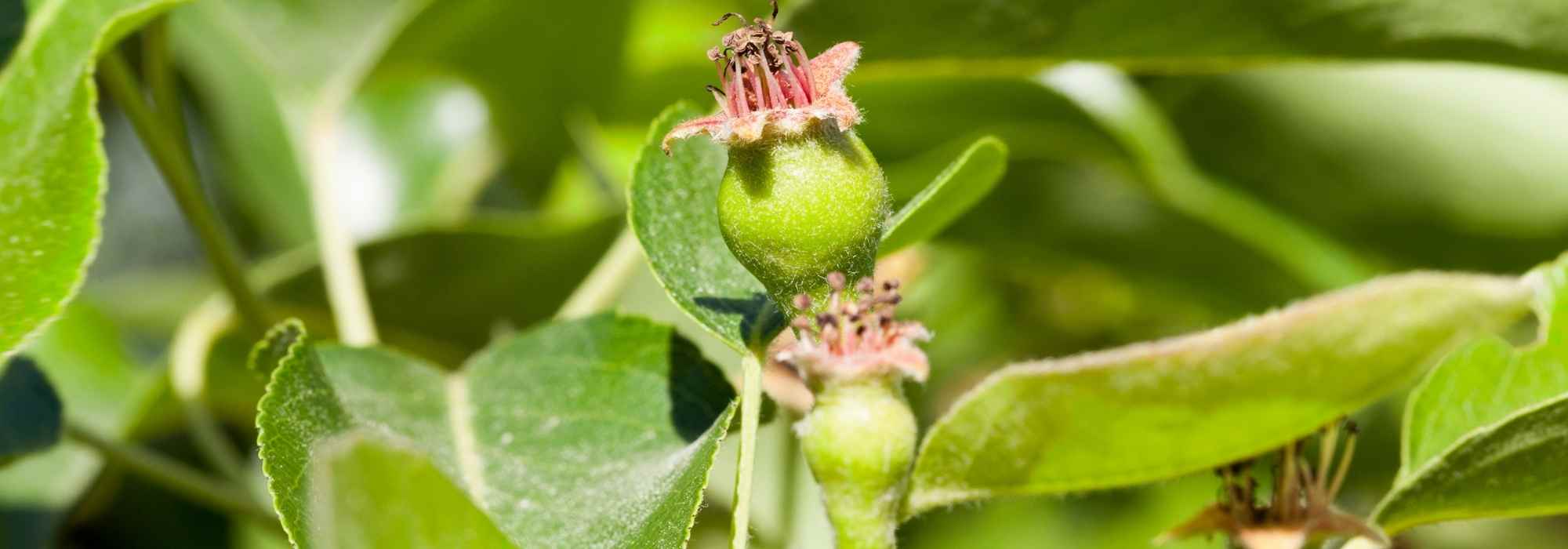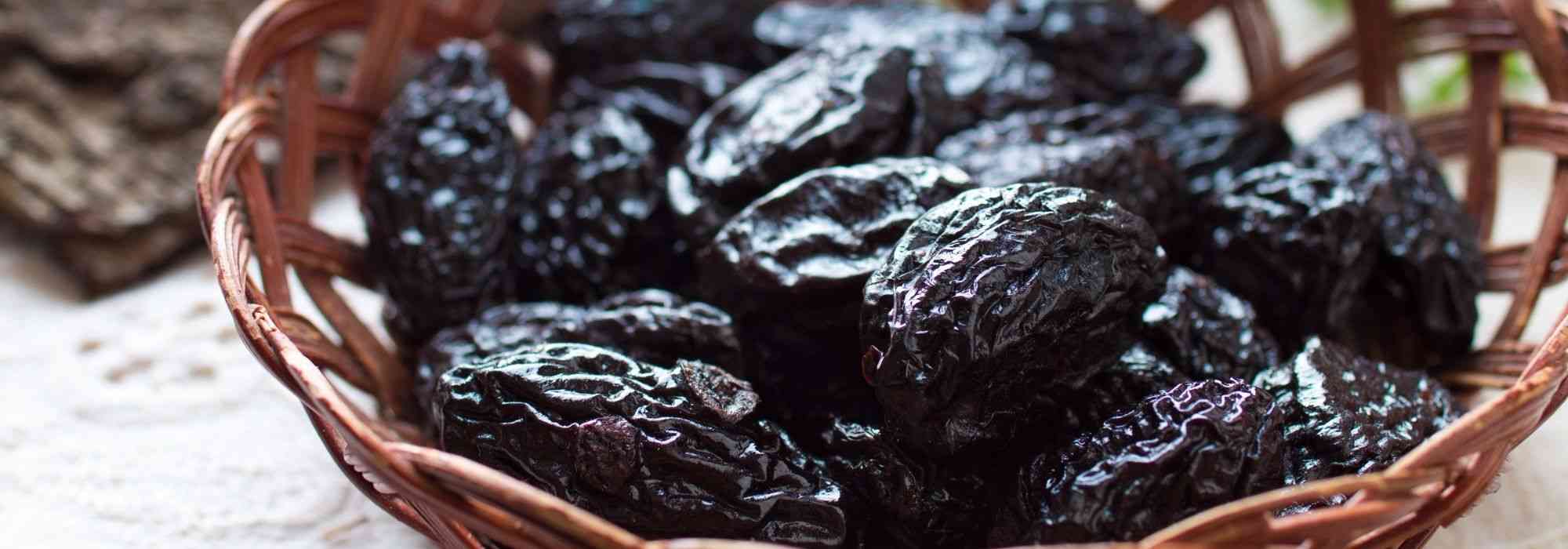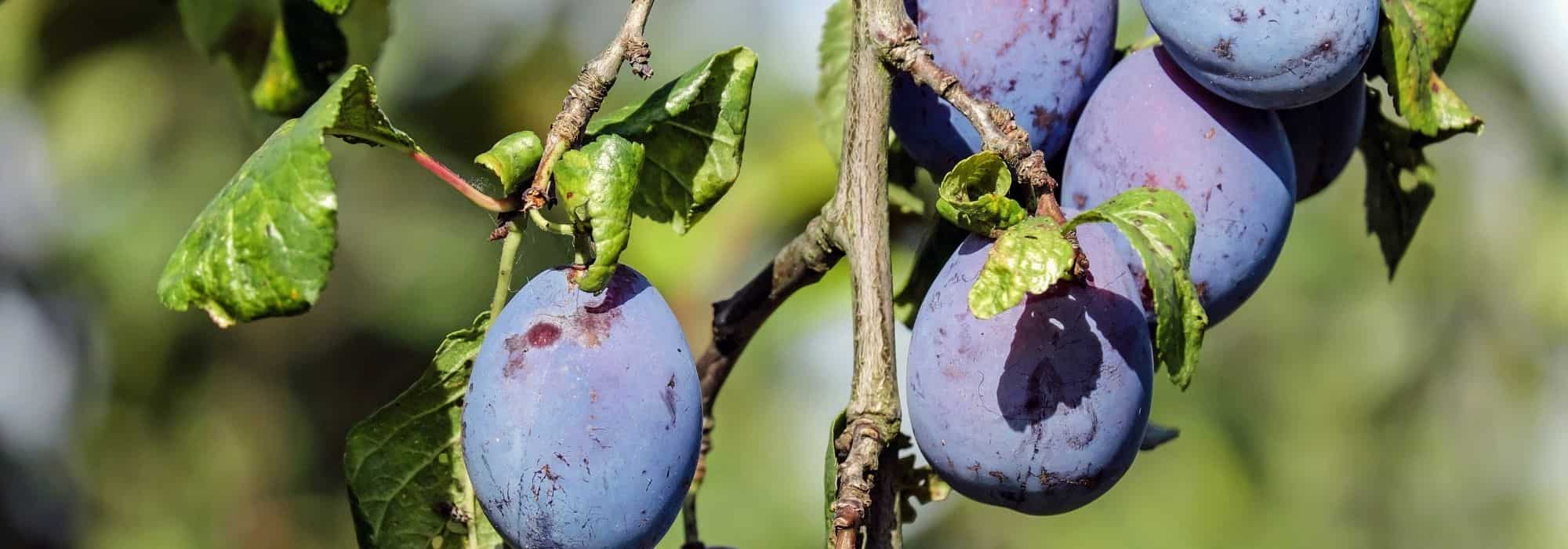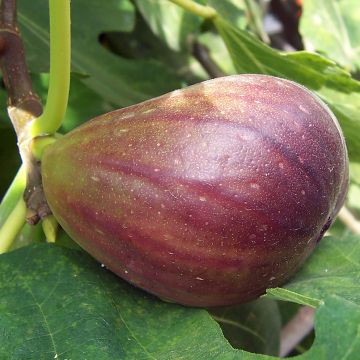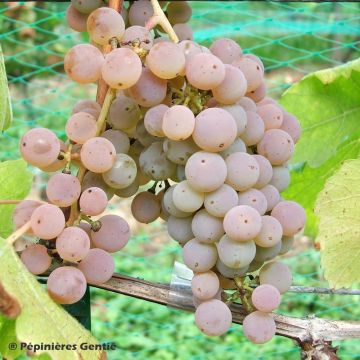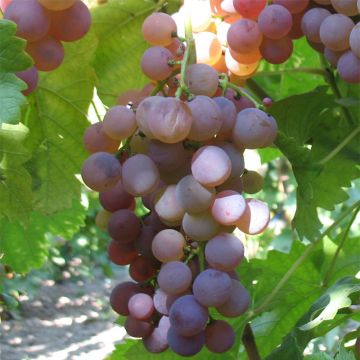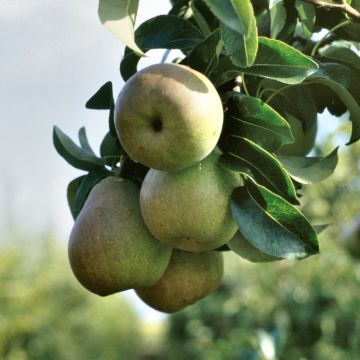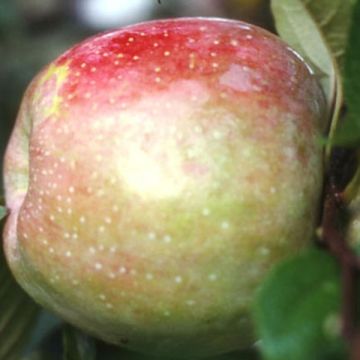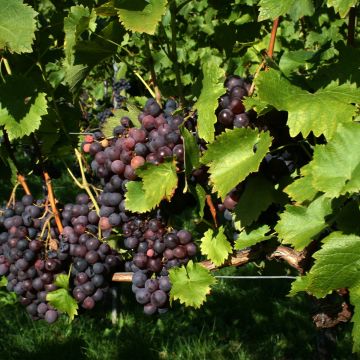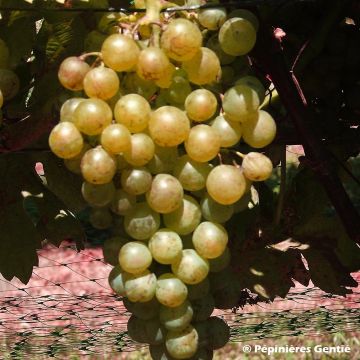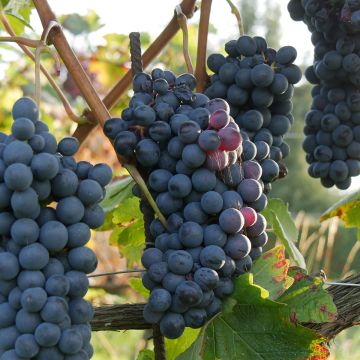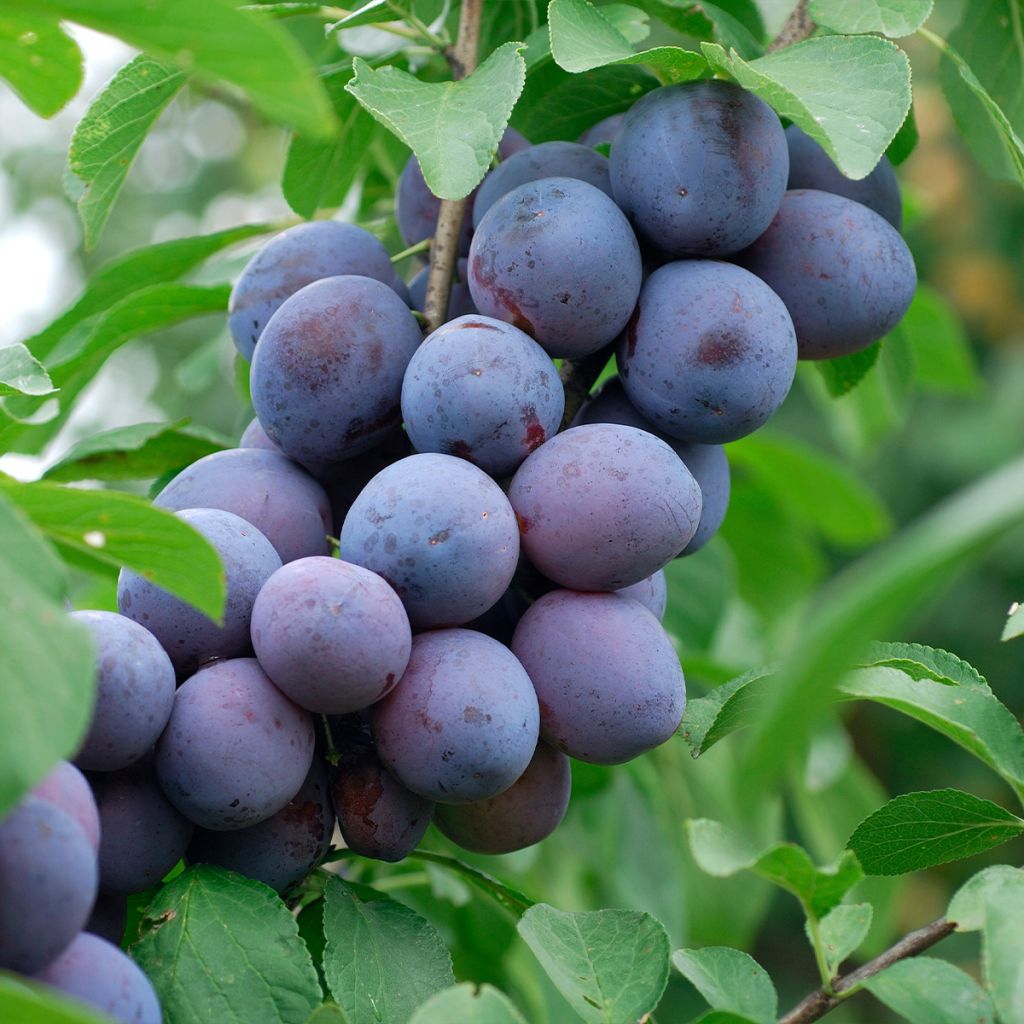

Prunus domestica Hauszwetsche - Common plum
Prunus domestica Hauszwetsche - Common plum
Prunus domestica Hauszwetsche
European plum, Common plum, Garden plum
Lovely bush, well-developed, received in very good condition, planted the same day, to be continued...
mbc, 29/10/2024
Special offer!
Receive a €20 voucher for any order over €90 (excluding delivery costs, credit notes, and plastic-free options)!
1- Add your favorite plants to your cart.
2- Once you have reached €90, confirm your order (you can even choose the delivery date!).
3- As soon as your order is shipped, you will receive an email containing your voucher code, valid for 3 months (90 days).
Your voucher is unique and can only be used once, for any order with a minimum value of €20, excluding delivery costs.
Can be combined with other current offers, non-divisible and non-refundable.
Home or relay delivery (depending on size and destination)
Schedule delivery date,
and select date in basket
This plant carries a 6 months recovery warranty
More information
We guarantee the quality of our plants for a full growing cycle, and will replace at our expense any plant that fails to recover under normal climatic and planting conditions.

Description
The Prunus domestica Hauszwetsche, also known as Basel Plum, is an ancient variety that is vigorous, hardy and highly productive. It is a self-fertile variety that pollinates well. It produces small to medium-sized fruit (3 to 5 cm (1 to 2in) long and 2.5 to 3 cm (1in) in diameter), oblong in shape, with smooth and pruinose skin, dark blue-violet. Its extremely aromatic flesh is yellow to yellow-orange, firm, not very juicy, sweet and delicately acidic. The stone easily separates from the pulp. The harvest occurs from late August to late September, and the fruits can be consumed as they ripen. The plum is enjoyable to eat, fresh or dried. When cooked, it is a variety that lends itself well to many sweet or savoury recipes. Susceptible to spring frosts, this plum tree prefers a warm, sunny and sheltered exposure.
The Prunus domestica (Common Plum) is a fruit tree belonging to the Rosaceae family, just like the apricot tree, almond tree and peach tree. It originates from Syria, where it sometimes grows up to 1000 metres (3281 feet) in altitude. The plum tree was introduced during the Middle Ages, and during the Renaissance, it developed and spread throughout the territory. The word "quetsche" comes from the German word Zwetsche, which itself is derived from the Greek word "damaskênon" meaning "Damascus plum". Traditionally cultivated in Lorraine (France), Germany and Austria, but without a doubt, the Quetsche finds its ideal soil in Alsace. The Hauszwetsche variety (Basel Plum) has somewhat unknown origins, but its main production region is in the Basel region in Northwestern Switzerland.
The Basel Plum forms a tree with a somewhat upright structure, reaching a height of 5 to 6 metres (16 to 20 feet), producing numerous branches grouped in a spreading crown. Its habit is suited to free forms on high, half or low stems. Its deciduous foliage comprises obovate leaves, 5 to 7 cm (2 to 3in) long, with serrated edges, slightly pubescent underneath, and dark green. Towards the end of March or the beginning of April, the white flowers, 1.5 to 2.5 cm (1in) in diameter, appear solitarily before the leaves on the previous year's branches. The flowering is sensitive to spring frost but so abundant that frost rarely affects the harvest. It is a remarkably decorative flowering in spring and is particularly attractive to bees and nectar-feeding insects. It is a hardy tree down to -20°C. This variety is self-fertile, so it does not need another variety of plum tree nearby to ensure good pollination of the flowers.
The Hauszwetsche Plum is a fertile variety that bears fruit quickly. Since plums are quite fragile, they are harvested using a picking pole or manually with a ladder, but always with delicacy. An average plum tree produces between 25 and 50 kilograms of fruit per year. Delicious and delightful, plums can be eaten fresh when picked, raw or mixed in a fruit salad or dessert. They are also enjoyed when dried. They are exquisite at making clafoutis, cakes, crumbles, or tarts and as an accompaniment to savoury dishes with white meats (turkey, chicken, veal, etc.) or tagines. They are also perfect for making jams, compotes, and juices or preserving them in syrup. The plum is a light and balanced fruit. Low in calories, it is rich in potassium, calcium and magnesium, with a significant iron content. Its vitamins C, B, E, and K, phenolic antioxidants, and fibre make the plum a health asset. It is refreshing, energising and rehydrating. The fruits can only be stored for a few days at room temperature. However, they can be frozen once washed, dried, pitted, or preserved in jams or syrup.
In the Plum Trees - Mirabelle category, the Prunus domestica Hauszwetsche is a vigorous, hardy, highly productive and very fertile variety known for the delicious quality of its fruits. Under favourable conditions, it is easy to grow, generous in fruit production and resistant to diseases. Like many fruit trees, it thrives in rich, deep and well-drained soils. It does not tolerate excess water, heavy and compacted soils, or excessively chalky soils. It prefers exposure to full sun and is sheltered from cold winds to protect it from frost and strong winds, as the branches are very brittle.
Very popular for its fruits, the plum tree finds its rightful place in the garden to the delight of young and old alike. With a wide range of varieties, it is easy to find the one that best suits one's desires.
Prunus domestica Hauszwetsche - Common plum in pictures
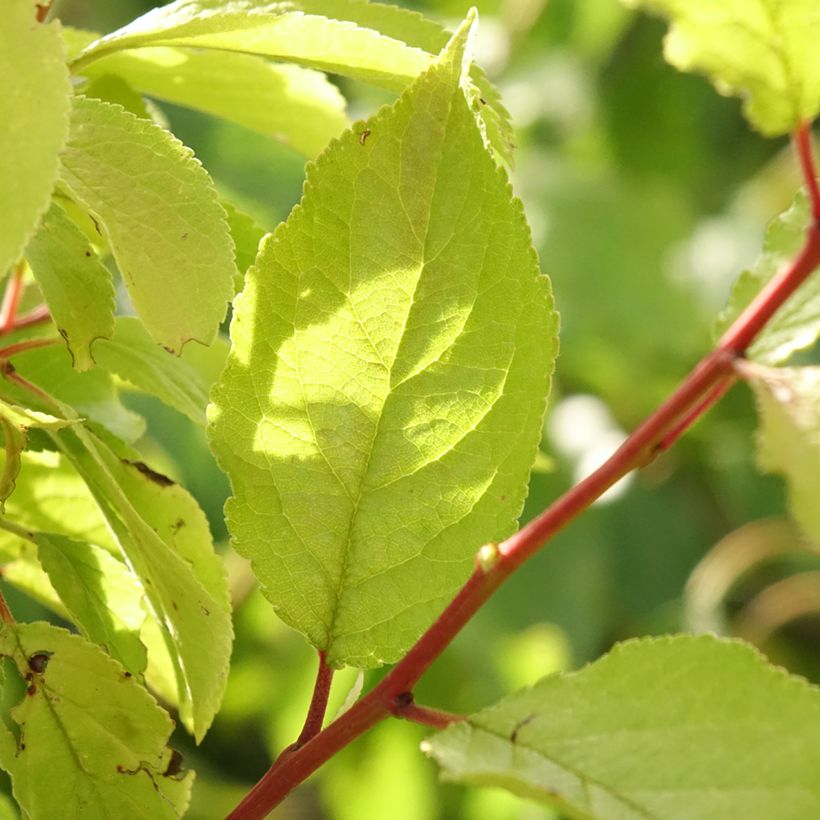

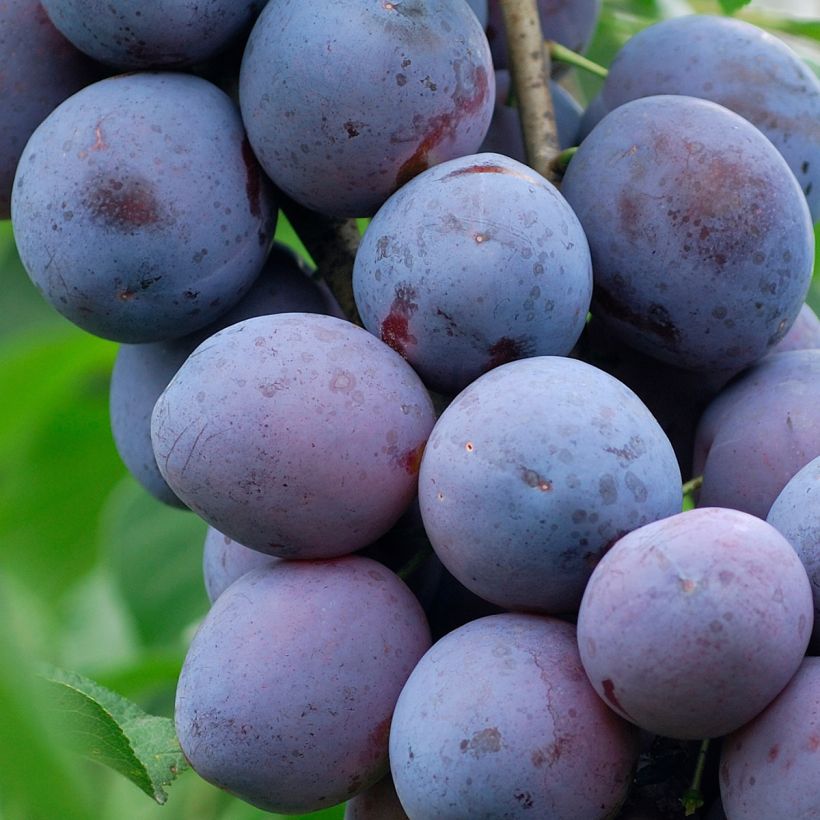

Plant habit
Fruit
Flowering
Foliage
Botanical data
Prunus
domestica
Hauszwetsche
Rosaceae
European plum, Common plum, Garden plum
Cultivar or hybrid
Other Plum Trees
View all →Planting and care
Perfectly hardy, the Basel Plum can withstand temperatures as low as -15°C (5°F) and can be grown up to 1,000 metres (3 feet) above sea level. It is one of the easiest fruit trees to cultivate when grown in optimal conditions, as it is both generous and resistant. Plum trees bloom early in spring and are exposed to frost, although frost rarely affects plum harvests. Avoid areas exposed to north and east winds in the coldest regions. To produce beautiful fruits, plum trees appreciate warmth and sunny locations sheltered from strong winds (the branches are very brittle). It is a vigorous tree that can thrive in any soil, although it prefers rich, moist, deep, well-drained soil that is slightly acidic, without stagnant moisture or excessive limestone. It truly only fears waterlogged soil. Plum trees are only grown in open forms, known as free-standing trees.
Planting a plum tree is done from November to March during the dormant period, excluding the freezing period. Container-grown trees can be planted year-round if the soil is neither frozen nor waterlogged. Remember to prune the bare roots before planting. In open ground, you can plant the plum tree in groups of 3 or 5, spacing the trees 6 to 7 metres (20 to 23 feet) apart.
Prepare the soil well. Dig a large planting hole at least three times the volume of the root ball (80x80 cm (32in)). Ensure drainage with some gravel. Place the tree in the hole and plant a stake without tying it too tightly. Fill in and tamp the soil with garden soil enriched with compost, well-rotted manure, and 2 or 3 handfuls of bonemeal without burying the graft (leave the graft point 10 cm (4in) above the ground). Create a basin around the base and water abundantly and regularly to help your plum tree establish itself.
In the first three years after planting, water regularly, as the soil should remain moist throughout the summer. It does not like dry soil. If there is a lack of water, its fruits may fall prematurely. After 2 or 3 years, it will better withstand a drought. Mulch the base of your plum tree during the first few years with dry vegetation (bark, dead leaves, straw, etc.) to keep it cool in summer.
If necessary, thin out the fruits. Ripe plums attract wasps, so pick up fallen fruits from the ground. Remove any shoots that have grown over time at the base of the tree, but be careful when hoeing, as its roots are shallow. Manure or fertiliser should be applied to fruit trees in autumn or spring.
Planting period
Intended location
Care
Planting & care advice
-
, onOrder confirmed
Reply from on Promesse de fleurs
Similar products
Haven't found what you were looking for?
Hardiness is the lowest winter temperature a plant can endure without suffering serious damage or even dying. However, hardiness is affected by location (a sheltered area, such as a patio), protection (winter cover) and soil type (hardiness is improved by well-drained soil).

Photo Sharing Terms & Conditions
In order to encourage gardeners to interact and share their experiences, Promesse de fleurs offers various media enabling content to be uploaded onto its Site - in particular via the ‘Photo sharing’ module.
The User agrees to refrain from:
- Posting any content that is illegal, prejudicial, insulting, racist, inciteful to hatred, revisionist, contrary to public decency, that infringes on privacy or on the privacy rights of third parties, in particular the publicity rights of persons and goods, intellectual property rights, or the right to privacy.
- Submitting content on behalf of a third party;
- Impersonate the identity of a third party and/or publish any personal information about a third party;
In general, the User undertakes to refrain from any unethical behaviour.
All Content (in particular text, comments, files, images, photos, videos, creative works, etc.), which may be subject to property or intellectual property rights, image or other private rights, shall remain the property of the User, subject to the limited rights granted by the terms of the licence granted by Promesse de fleurs as stated below. Users are at liberty to publish or not to publish such Content on the Site, notably via the ‘Photo Sharing’ facility, and accept that this Content shall be made public and freely accessible, notably on the Internet.
Users further acknowledge, undertake to have ,and guarantee that they hold all necessary rights and permissions to publish such material on the Site, in particular with regard to the legislation in force pertaining to any privacy, property, intellectual property, image, or contractual rights, or rights of any other nature. By publishing such Content on the Site, Users acknowledge accepting full liability as publishers of the Content within the meaning of the law, and grant Promesse de fleurs, free of charge, an inclusive, worldwide licence for the said Content for the entire duration of its publication, including all reproduction, representation, up/downloading, displaying, performing, transmission, and storage rights.
Users also grant permission for their name to be linked to the Content and accept that this link may not always be made available.
By engaging in posting material, Users consent to their Content becoming automatically accessible on the Internet, in particular on other sites and/or blogs and/or web pages of the Promesse de fleurs site, including in particular social pages and the Promesse de fleurs catalogue.
Users may secure the removal of entrusted content free of charge by issuing a simple request via our contact form.
The flowering period indicated on our website applies to countries and regions located in USDA zone 8 (France, the United Kingdom, Ireland, the Netherlands, etc.)
It will vary according to where you live:
- In zones 9 to 10 (Italy, Spain, Greece, etc.), flowering will occur about 2 to 4 weeks earlier.
- In zones 6 to 7 (Germany, Poland, Slovenia, and lower mountainous regions), flowering will be delayed by 2 to 3 weeks.
- In zone 5 (Central Europe, Scandinavia), blooming will be delayed by 3 to 5 weeks.
In temperate climates, pruning of spring-flowering shrubs (forsythia, spireas, etc.) should be done just after flowering.
Pruning of summer-flowering shrubs (Indian Lilac, Perovskia, etc.) can be done in winter or spring.
In cold regions as well as with frost-sensitive plants, avoid pruning too early when severe frosts may still occur.
The planting period indicated on our website applies to countries and regions located in USDA zone 8 (France, United Kingdom, Ireland, Netherlands).
It will vary according to where you live:
- In Mediterranean zones (Marseille, Madrid, Milan, etc.), autumn and winter are the best planting periods.
- In continental zones (Strasbourg, Munich, Vienna, etc.), delay planting by 2 to 3 weeks in spring and bring it forward by 2 to 4 weeks in autumn.
- In mountainous regions (the Alps, Pyrenees, Carpathians, etc.), it is best to plant in late spring (May-June) or late summer (August-September).
The harvesting period indicated on our website applies to countries and regions in USDA zone 8 (France, England, Ireland, the Netherlands).
In colder areas (Scandinavia, Poland, Austria...) fruit and vegetable harvests are likely to be delayed by 3-4 weeks.
In warmer areas (Italy, Spain, Greece, etc.), harvesting will probably take place earlier, depending on weather conditions.
The sowing periods indicated on our website apply to countries and regions within USDA Zone 8 (France, UK, Ireland, Netherlands).
In colder areas (Scandinavia, Poland, Austria...), delay any outdoor sowing by 3-4 weeks, or sow under glass.
In warmer climes (Italy, Spain, Greece, etc.), bring outdoor sowing forward by a few weeks.






























